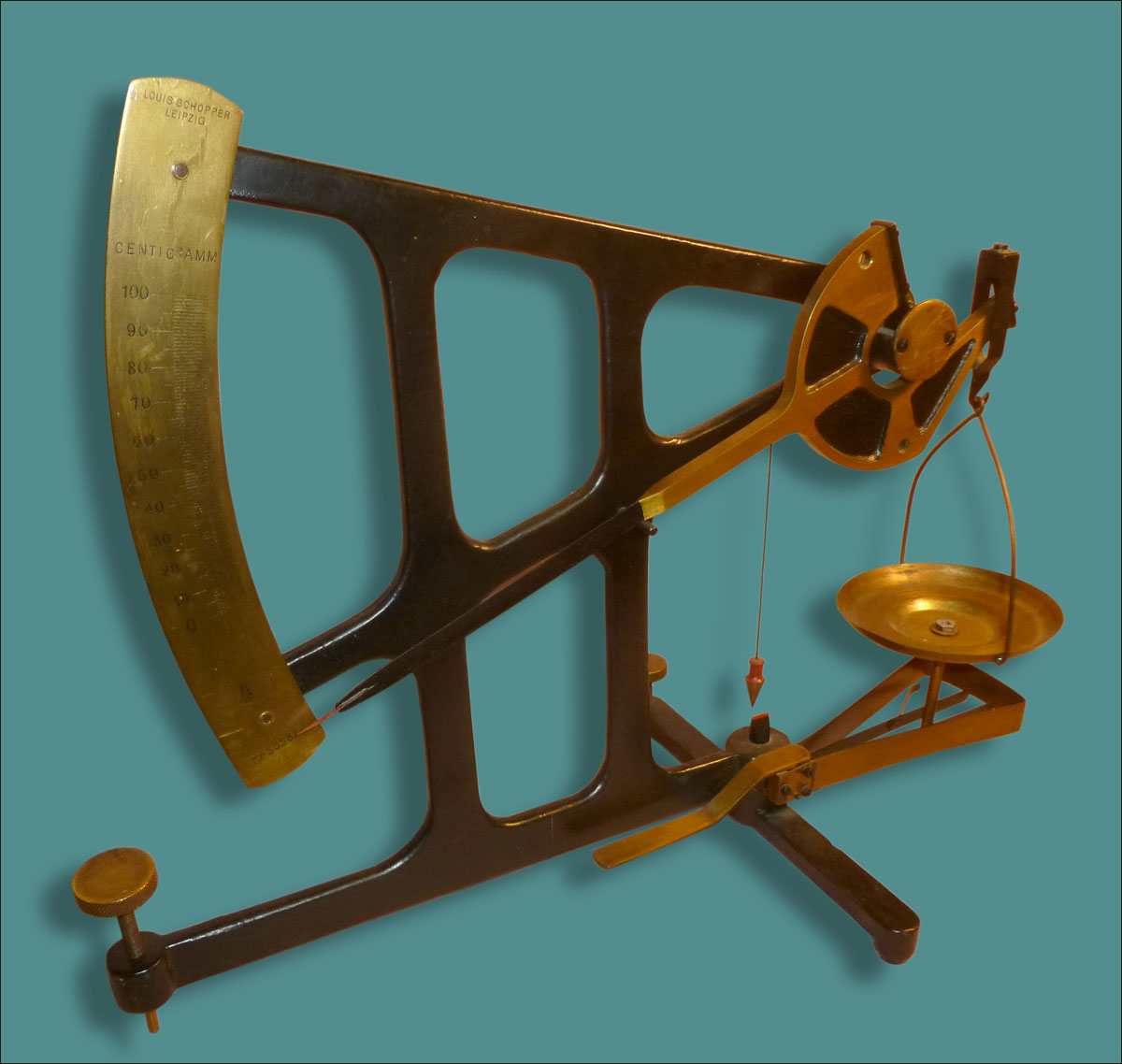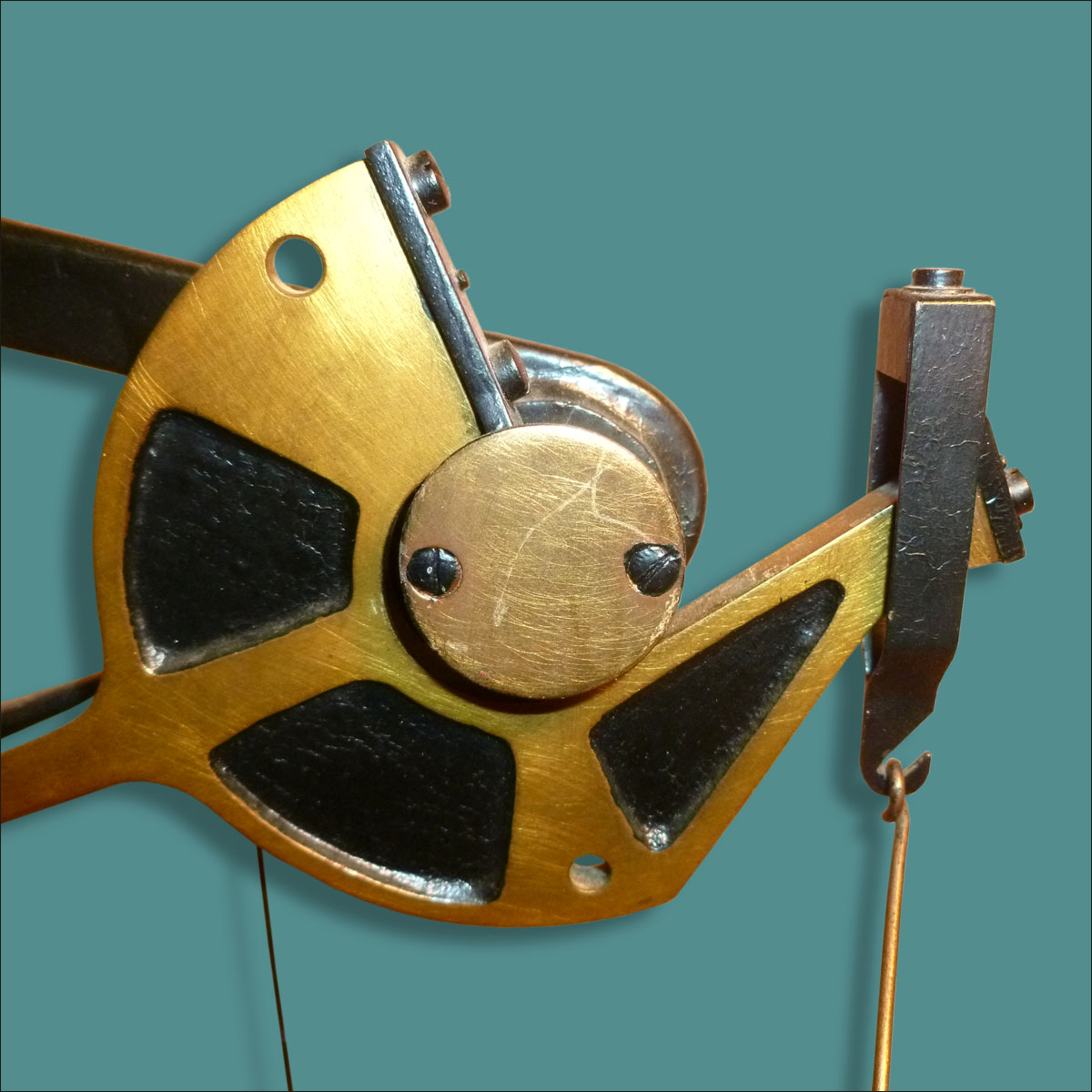
Being a collector who enjoys the unusual, and not necessarily wrapped up in the details of any particular type of scale, I went ahead and purchased it despite knowing next to nothing about its use. All we knew was that it was marked Louis Schopper Leipzig, which indicated it was German. As a favor my friend had given me first refusal even though several German collectors he knew were also interested in buying it. I was thrilled with my newest acquisition and couldn’t wait to have it join the other scales in our collection. We were in Europe at the time and knowing the size would make it difficult to carry the scale in our suitcase, my friend offered to pack and ship it to me after I returned home. He had shipped many things to us in the past, so I was very appreciative and didn’t hesitate to accept his offer. About a month later the package showed up on our doorstep. Excitedly, I unpacked the different pieces and started assembling the scale. It was then I realized a vital piece was missing. It was the part known as a stirrup that has the hook on which the hanger with the pan attaches to the scale. I frantically went back through all the wrapping to try and find it only to no avail. I immediately emailed my friend to see if possibly he still had the part and had accidently forgotten to include it in the package. Back came his reply that he had looked, but could not find it anywhere and thought he had sent it. I was disheartened to say the least. It was not a part that you could get from the local hardware store. We had a photo of the scale, but no close-ups of the missing part to try to have it reproduced. Since I had never seen another scale like it, I knew no one who had a duplicate scale who could provide photos of it. As is so often the case, the absence of one small, crucial piece made the difference between having a really impressive scale or something that borders on junk. Not knowing what to do, I put the scale aside not even wanting to think about it as it was too depressing to me.
Almost a year later, imagine my surprise when I get an email from my friend saying he had found the missing piece from my scale. He been unpacking some measures and amazingly inside one of them, there it was. It seems when he had packed up all of his stuff along with my scale to return home from the scale meeting, the part had fallen into the measure without him realizing it. I was ecstatic! Shortly after that the missing part arrived and was placed in position allowing the proper attachment of the hanger with the pan. I was attracted as ever by the scale, although I still had no idea what type it was or what it was used for. Time went on with more scales added to the collection, but nothing we came across gave us any indication of the purpose of this scale, so we just appreciated it for its design without knowing more. It was a couple years down the road when we learned that an older member had decided to sell his collection on eBay. By this time we had been collecting for about twenty years, and so while we took a look at the items up for auction, there wasn’t much that we were interested in that we didn’t already have. Unlike many collectors, we have not made a habit of collecting old scale catalogs. However, included in the collection up for sale were many catalogs by well-known manufacturers. Out of curiosity I started to peruse though the listings of these catalogs and came across one for Louis Schopper Leipzig [Germany] titled Testing Machinery For Paper and Cardboard. I have several scales by this maker, so I scrolled down to check out more detail never thinking about the scale I had acquired from my friend. That’s when I saw it! As part of the description on eBay there was a photo of a page from this catalog. At the top of the page it said “Precision Ash Scale” and there immediately underneath the name was my German mystery scale. Finally, I had the answer to the question I had asked years earlier when I first saw it. What were the chances? First, of my taking the time to look at the catalog listings, which I normally didn’t, and second, that the buyer had chosen to photograph the 75th page of the 112 page catalog that just happened to have my scale on it. It was fate. I quickly put in a bid on the high side to assure getting it. I was glad I upped my bid as I did have some competition, but ultimately I won the auction. When I received the catalog I was then able to read and learn more about my “no longer a mystery” scale. It was the third scale listed under the category “Scales for ascertaining the Percentage of Ash in Paper.” The description read: This scale allows of reading at a glance the percentage of ash with an accuracy of more than 1%. The scale is fitted with a brake to arrest the oscillation of the weighing pan to ensure quick and reliable operation.
In addition to the description, the verbiage explained how to use the scale and ascertain weights for different ranges. I also learned that the scale came with an ash weighing glass which is missing and presumed broken long ago. Scale collecting is an fascinating hobby in many respects. Partly it is the fun of the hunt, partly it is the ownership of an historical weighing device and partly it is, as in this case, learning about what you have and the sometimes odd twists in that journey of discovery. This Scale Tale was written by Carol H. For more stories, see our Scale Tales Library
|
|||||||||||||






